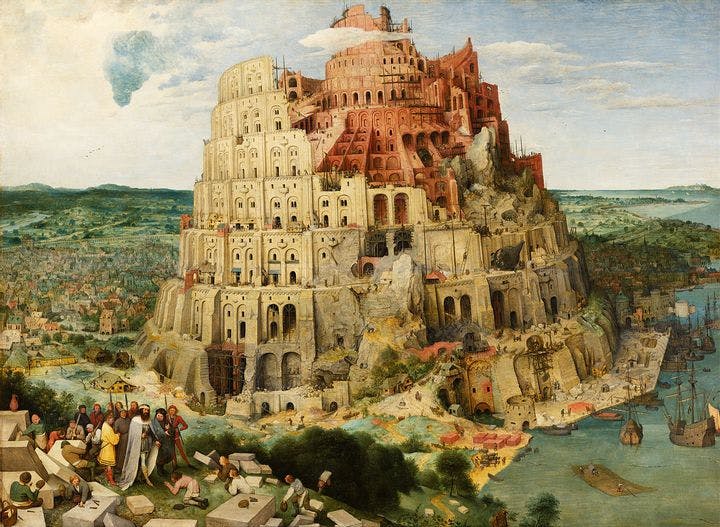Summer 2009
Lessons of Babel
– The Wilson Quarterly
Joseph Smith, the 19th-century prophet of the Mormon Church, saw in the story of the Tower of Babel a metaphor for the "infinitie multiplications of opinion" within the Christian world.
Of all the lessons of Genesis, few were taken more seriously by Joseph Smith (1805–44), the 19th-century prophet of the Mormon Church, than the account of the Tower of Babel. Mankind’s effort to build a tower that would “reach unto heaven,” according to the Bible, caused an angry God to “confound” the world’s single original language and scattered people to the corners of the earth.
Smith, the leader of the Church of Jesus Christ of Latter-day Saints, believed that the destruction of the universal language of the Israelites led to a confusion of meaning, dissension, and religious sectarianism that plagued society even into the 1830s, writes Samuel Brown, a physician who is pursuing postresidency training at the University of Utah.
Was the Tower of Babel a metaphor for the "infinite multiplications of opinion," errors, and strife within the Christian world?
Smith’s concern was part of a broad intellectual belief, widespread in his time, that the corruption of language had led to the “infinite multiplications of opinion,” errors, and strife within the Christian world. Philosopher-critic Ralph Waldo Emerson (1803–82) thought the problem was not confined to religion. “The corruption of man is followed by the corruption of language,” he wrote. Methodist, Unitarian, and Congregationalist writers worried that language had become so degraded that it was impossible to convey religious truth.
Joseph Smith believed that ancient languages, particularly the one expressed in Egyptian hieroglyphs, provided a key to recovering the language of the Garden of Eden. This made it logical for Smith and his followers to purchase four mummies and their papyruses from an entrepreneur who appeared at the temporary Mormon capital of Kirtland, Ohio, in 1835. They paid $2,400, the equivalent of five years’ income for an average farming family.
Only a few years earlier, Smith had miraculously translated the ancient Book of Mormon, the religion’s founding text, from a language known as “Reformed Egyptian.” It told the story of America’s “first settlement by a colony that came from the Tower of Babel, at the confusion of languages,” Brown writes. The papyruses Smith acquired in 1835 added details to that account, and enabled Smith and his followers to compile what they described as hieroglyphic grammar that would help guide Mormons toward understanding and, in time, speaking God’s original language.
When the Millennium arrived, Brown writes, believers would stand with the original Adam near the primordial Garden of Eden. They would constitute “a human family united by language and mutual awareness, one whose members called each other by sacred and ancient names.”
THE SOURCE: “Joseph (Smith) in Egypt: Babel, Hieroglyphs, and the Pure Language of Eden” by Samuel Brown, in Church History, March 2009.
Image courtesy of Wikimedia Commons
